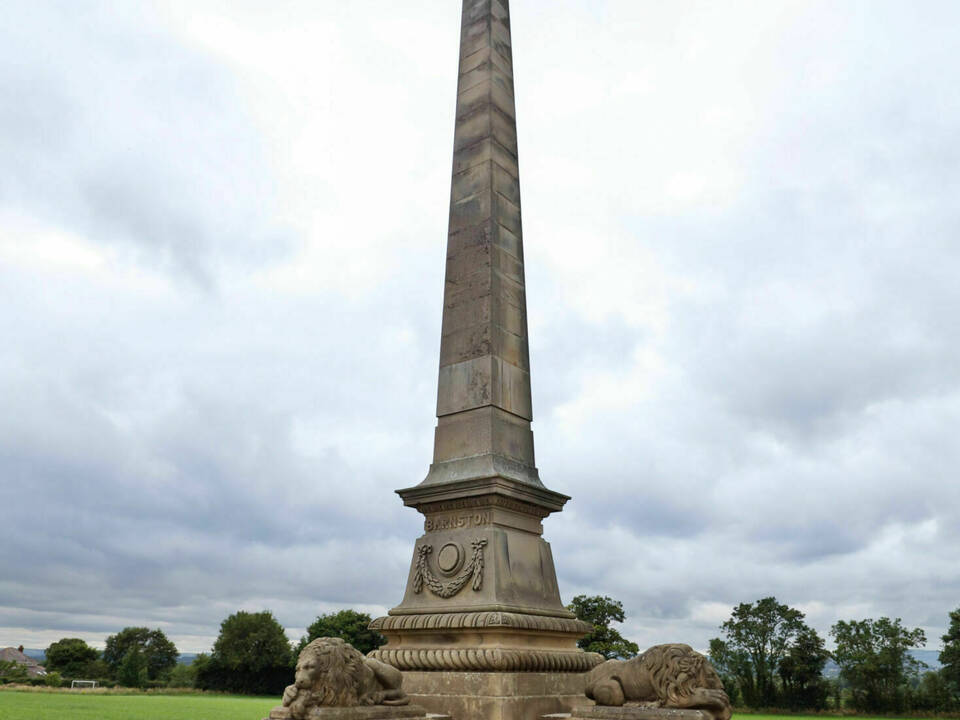It has kept watch, stoic and proud, over the Cheshire village of Farndon for generations.
Standing some 55ft tall, with four symbolic lions at its base, the landmark is a memorial to a member of the Barnston family who gave his life in service to his country.
Today the Grade II-listed Barnston Monument forms part of Monument Meadow, the award-winning natural burial ground recently recognised by the Chester Civic Trust for its design in-keeping with the natural environment.
The Monument commemorates the life of Major Roger Barnston, who was born in Chester in 1826. He inherited the Barnston Estate at Crewe Hill aged only 22 whilst pursuing a successful military career.
Roger sailed for the Crimean War as part of the Perthshire Light Infantry in 1854 and served alongside Lord Raglan, Commander of British forces in the Crimea. Captain, later Field Marshal, Garnet Wolseley was on Roger’s staff in the Crimean and Florence Nightingale nursed his brother William.
Roger was present at the siege of Sevastopol from 1854–55 and would later sustain a fatal wound during the relief of Lucknow, India, in 1857.
Wolseley would later write a glowing tribute after his death: “Major Barnston displayed … many of the qualities we recognise as peculiarly the attributes of those who are leaders of men.”
“It’s amazing to think Roger mapped the Crimea from horseback,” says Michael Trevor-Barnston, whose great-grandmother, Mary, was the daughter of William, Roger’s brother. Mary married a member of the Trevor family and is buried in the churchyard at Rossett.
“The family has letters Roger and William sent home from their service overseas and, when I visited modern-day Ukraine in the Nineties, I found the sites he visited exactly as they described them,” adds Michael, leading a whirlwind tour around Crewe Hill, including a series of cabinets featuring battle maps and medals awarded to Roger and brother during the Crimean War.
After Roger’s untimely death at the age of just 31, friends and colleagues called an extraordinary meeting in Chester in 1858 to discuss plans for a memorial. The then Earl Grosvenor MP, the future Duke of Westminster, lent his personal approval to the scheme.
The Barnston Monument, replacing the site of a former windmill at Farndon with views across the Welsh hills, used stone from North Wales, iron railings (later removed), and was based around a quadrant of 6ft recumbent lions. The total cost of construction was £460 - it would cost around £500,000 to replace in today’s monetary terms.
“People like Roger and his brother William, my forefather, were remarkable men,” says Michael, who has cared for the monument and funded the refurbishment of another Barnston family memorial within the West Door at Chester Cathedral. “If injured, the doctor would patch them up and, later, the soldier would return to the battlefield.”
Michael, who has traced his family tree back to the time of Edward I, has a fine collection of Civil War items from the 1640s, when the Barnston family sided with Charles I for Royalist Chester. But he is particularly proud of an unusual but treasured family heirloom: a horse’s hoof fashioned into an ink well.
This, it transpires, was the hoof of Redan, Roger’s trusty steed in Crimea, and is inscribed with the names of both Roger and William Barnston. The horse, who outlived both brothers, is now buried in the grounds of Crewe Hill on the Barnston Estate.
Today the Barnston Memorial has a different perspective. The sleeping lions watch over the village's natural burial ground. But its inscription remains forever timely, the words from John, iii,16:
“We ought to lay down our life for the brethren.”

